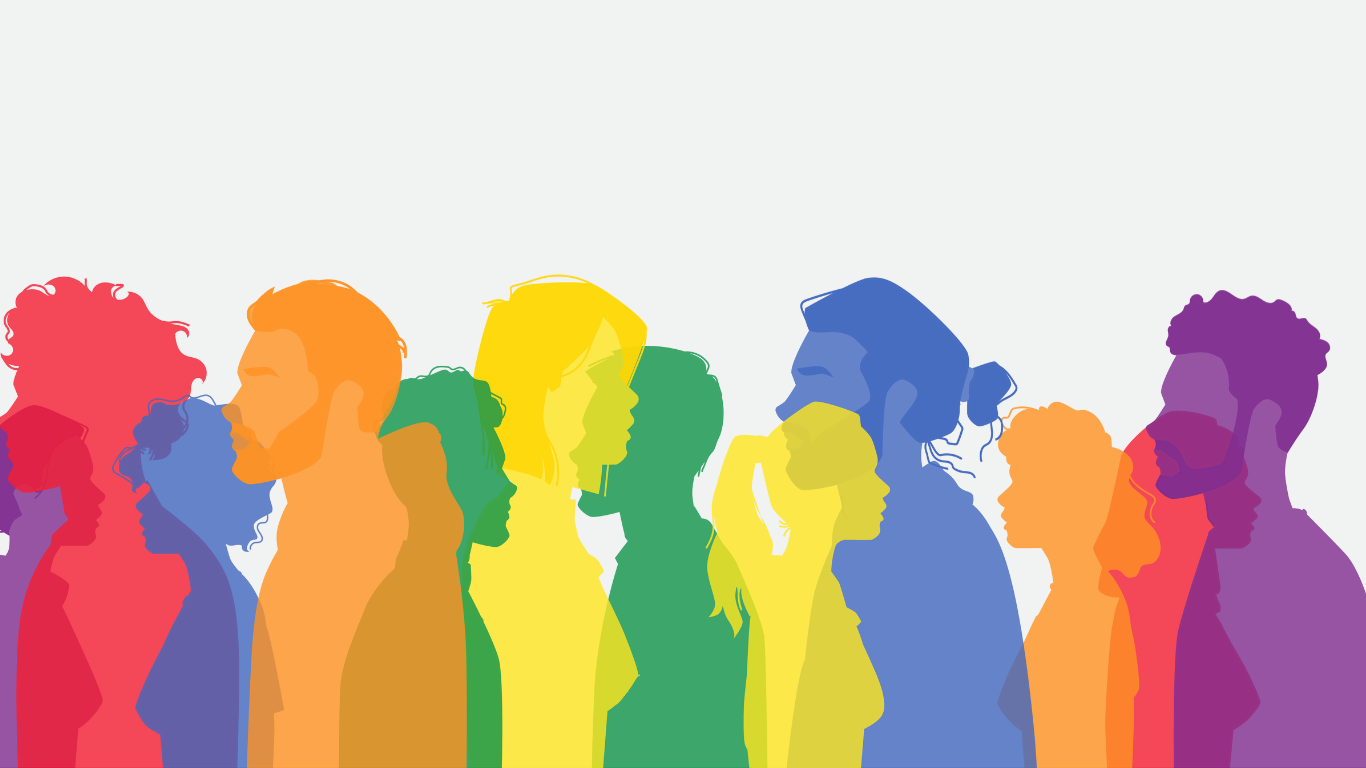Hello, you. If you’re a returning student, lovely to have you back. If you’re new to Mister B’s Class in Session series, welcome. In this series, Mister B educates and informs our community about issues which we believe need a little light shone on them. In today’s class, we’ll be unwrapping and debunking the misconceptions about bisexuality, pansexuality, and asexuality. There’s a lot of misunderstanding around these sexual orientations which is affecting our ability to fully unite our growing community. So, whether you’re someone still trying to figure out their sexuality, or someone who already knows how they identify – and may be growing hesitant towards the ever-expanding LGBTQQIP2SA acronym – I assure you there’s something to learn for all of you. Get ready to pump some neurons and expand your craniums, because class is officially back in session!
We’re kicking off in somewhat familiar territory. The B of the original LGBT acronym has been there forever, but the disregard and oppression of bisexuality endure – from in and outside the queer community. The term bisexuality contains bi, which is the Latin word for “two”. So, bisexuality is a sexual orientation in which people may be attracted to ‘both’ (or ‘two’) genders. To be fair on bisexuality, it was coined in the late 1800s long before the sociopolitical critic “gender is a construct” had time to educate the public, and back when bisexual people wouldn’t have to choose which two genders they were attracted to because there ‘were’ only two.
However, there are now five genders that circulate in Western society, and that is not even to mention the countless more from Eastern, Native and Latin countries and spiritualities. These five are as follows: male, female, transgender, nonbinary and genderqueer. To prevent it from becoming outdated, and to catch up with the current climate, bisexuality has loosened up on its criteria in the last few decades. The new and improved bisexuality is a sexual orientation for anyone who feels an attraction to two (or more) genders. Note that here, someone’s gender (regardless of what it is) does factor into a bisexual person’s attraction to them, and that is what distinguishes bisexuality from pansexuality.
Pansexuality
Our first clue to understanding what pansexuality is is hidden in the name itself. Pan comes from the Greek word for “all”. You may recognise some similarities between pansexuality and bisexuality, but there are a few ‘fine-print’ differences which are important to take note of. Whereas people who identify as bisexual are attracted to two (or more) genders, gender and sexuality are neither requirements nor determinants of attraction for pansexual people. If it helps, think of it as being ‘gender-blind’. Some pansexual people will still have a preferred gender role, but gender does not factor into their attraction.
Whilst some people use bisexuality and pansexuality terminology interchangeably, others gravitate towards one or the other. Those who identify as pansexual may do so because they find that ‘bi’ reinforces the gender binary. The term pansexuality was coined in the early 1900s by Sigmund Freud, the controversial Austrian neurologist/kinkster. However, it wasn’t until the sexual revolution of the 1970s onwards that the term began entering the public consciousness. As nonbinary and genderqueer people began advocating for their identity throughout the 1990s, this gave way to the forming of the pansexual community. In 2010, the community was further solidified when a pansexual flag started to circulate – consisting of a pink, blue and yellow stripe to represent attraction regardless of gender.
Whereas with pansexuality, sexual attraction to another person may occur despite their gender, those who identify as asexual generally will not experience sexual attraction towards another person despite their gender. Under the umbrella term of asexuality, there lies a range of different attitudes and lived experiences known as the asexual spectrum. Below are the three categories of asexuality, which are widely agreed upon as being a good base for exploring the main variations in the asexual spectrum.
1) Sex Negative: someone who finds sex off-putting and repulsive, or is just completely disinterested in the idea of sex.
2) Sex Neutral: someone who isn’t repulsed by sex but also doesn’t actively seek it out. These people may still have sex if, for example, they’re in a relationship and want to please their partner.
3) Sex Positive: someone who identifies as asexual, meaning they don’t feel sexual attraction to others, but will still have sex for pleasure.
Someone may identify as asexual and yet agree to engage in sex for the benefit of a potential partner or for reproductive purposes. Asexuality, therefore, should not be confused with celibacy or abstinence, where people make a conscious decision to refrain from sex. Neither can it be assumed that asexual people have never had sex. Another common misunderstanding is that a lack of sexual attraction = a lack of a sexual desire. Someone who is asexual may have a high libido, and an active sex life (don’t forget all the sexual release that be gotten from those trusty hands of yours).
Demisexuality & Graysexuality
Demisexuality is the sexual orientation given to those asexuals who may only experience a sexual attraction after a deep emotional bond has been formed. I’m sure there will be some students in class who will start to snigger at this point. I will admit to having a little giggle myself. On the surface, demisexuality seems like it was written up by a needy girlfriend who devised the perfect excuse to get her baby-daddy boyfriend to listen to her talk endlessly for hours every night if he wanted to get laid. But setting humour aside, this is a legitimate sexual orientation and because of flippant dismissal, they need to fight for validation almost harder than any other group here. One of the biggest misconceptions about demisexuality is that they need to establish love before sex, but that is not the case. Whilst in each situation, it is going to take different lengths of time to establish an emotional bond, any type of non-romantic friendship also opens the doors to a potential sexual attraction.
Graysexuality is another ‘sub-sexuality’ under the asexual umbrella. Graysexual people experience sexual attraction very rarely or with very low intensity. People will identify themselves as being graysexual for a variety of reasons, but most of the time it is if they do not connect with any of the three major types of asexuality (see section: Asexuality). For example, sometimes people have reported having random and unforeseen bursts of sexual energy and attraction that don’t exactly belong in the other categories. How does this differ from an allosexual (aka ‘sexual’ – the opposite of asexual) person? Sexual attraction and libido (or sex drive) are not the same. Libido is wanting to have sex for pleasure and relief, like scratching an itch. Sexual attraction is when you find someone attractive and want to have sex with them. Some asexual and graysexual people may still have a strong libido, while some allosexual people may have a low libido.
So, what have we learned today? We’ve seen that each letter on our ever-growing LGBTQQIP2SA acronym represents a specific sexuality; all nuanced with their own terminologies, and all with their own set of misconceptions. Only by educating ourselves on the experience of others, can we begin to build empathy in our community. And so, even if you’re lucky enough to be steadfast in your sexual identity already, there remains a lot to learn.
Lastly, I’d like to leave you with this note: by no means must you feel restricted by the sexual orientations already identified and labelled. You are entitled to your own unique journey of self-discovery. The destination of which, is entirely at your discretion.
AFTER-CLASS KINKY SPECIAL
As usual, we wanted to leave you gold-star students with a little homework. Today’s extra readings will build upon what we learned in class, and bring in elements of kink and fetish.
- Can I be a kinky ace by Nikki Hayfield
In this fascinating qualitative research report, the researcher explores how asexual kinksters learned to enjoy fetish in a way that’s cohesive with their sexuality. - Bisexuality, pansexuality, queer Identity, and kink identity by Richard Sprott
The researcher explores the idea of using BDSM and power-play as an avenue to explore bisexual and pansexual gender identities and sexual orientations.









